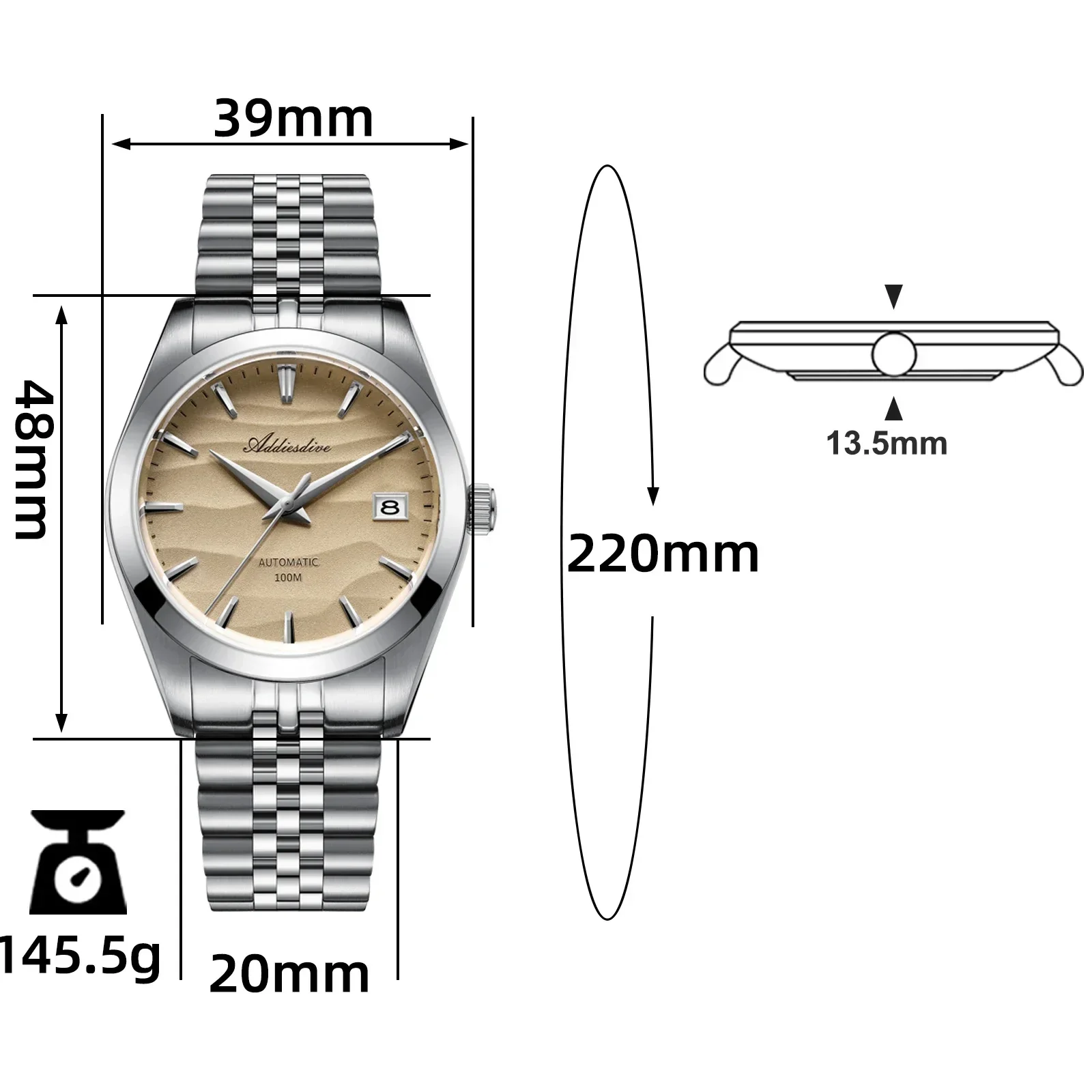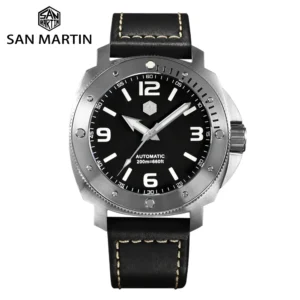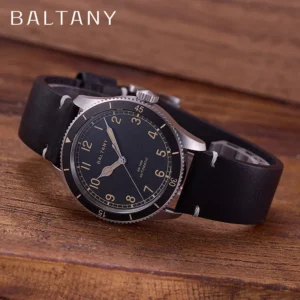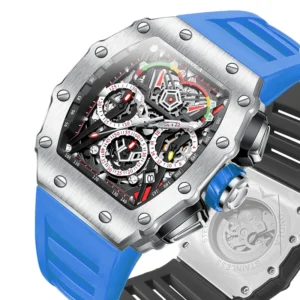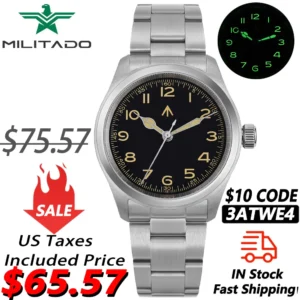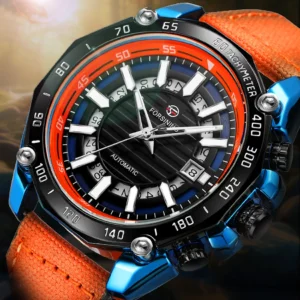The Battlefield Origins: Why Wristwatches Replaced Pocket Watches
Before World War I transformed modern warfare, pocket watches reigned supreme as the gentleman’s timepiece of choice. These intricate devices, while beautiful and functional in civilian life, proved woefully inadequate when thrust into the chaos of combat. The battlefield presented a harsh reality: a soldier fumbling with a pocket watch during artillery fire was not only inefficient but potentially fatal.
Pocket watches required two hands to operate—one to hold the watch and another to open the case and check the time. In the muddy trenches of WWI, where soldiers needed their hands free for weapons and equipment, this design flaw became glaringly obvious. Military operations increasingly relied on precise timing, particularly for coordinated artillery barrages and infantry advances. Officers needed to synchronize watches before missions, and split-second timing often meant the difference between success and failure—or life and death.
This urgent battlefield need sparked innovation in the form of the “trench watch,” a crucial evolutionary bridge in timepiece history. Early versions were essentially pocket watches with wire lugs soldered onto the case, allowing them to be strapped to the wrist with leather bands. This simple modification revolutionized timekeeping in warfare, enabling evolution from trench to field watches that would fundamentally change how watches were designed and worn.
Military officers became early adopters of these wrist-worn timepieces, valuing their practicality over tradition. As the war progressed, what began as improvised adaptations evolved into purpose-built designs specifically created for combat conditions—the true birth of the military field watch.
Core Military Requirements: The Design Principles That Endure
The unforgiving realities of combat transformed watches from mere accessories into essential military equipment. When lives depend on timing, a watch becomes much more than a convenience—it becomes a critical tool subject to the most demanding performance standards.
Military watches needed to function reliably in the worst conditions imaginable: the freezing mud of trench warfare, the humidity of jungle operations, the abrasive dust of desert campaigns, and the saltwater exposure of naval and amphibious missions. Battlefield conditions dictated that these timepieces be designed with absolute prioritization of function over form.
Three fundamental requirements emerged to define military timepieces, principles that continue to guide the evolution of military field watches to this day:
- Legibility: The ability to read time instantly and accurately, even in poor visibility
- Durability: Construction that withstands physical shocks, extreme temperatures, and environmental exposure
- Functionality: Features beyond basic timekeeping that serve specific military purposes
These core principles were eventually formalized into military specifications, but they originated directly from the needs of soldiers in combat. What makes field watches enduringly appealing is that these same qualities prove valuable in countless civilian contexts—from outdoor adventures to everyday reliability.
The military-driven design ethos prioritized simplicity and purpose, eliminating anything superfluous while perfecting what was essential. This approach created not just effective tools for soldiers, but watches with an honest, timeless quality that continues to resonate beyond their martial origins.
Unwavering Legibility: Designing for Split-Second Readability
In combat, a moment’s hesitation while reading your watch could have deadly consequences. This reality drove the development of dials optimized for instantaneous readability under the worst possible conditions—a design priority that transformed watch faces forever.
Military field watches featured high-contrast black dials with bold white numerals and markers—the optimal combination for quick visual recognition. Arabic numerals became standard because they could be read more quickly and with less possibility of error than Roman numerals or simple indices. The minutes track along the outer edge of the dial was emphasized, reflecting the military’s need for precise time measurement rather than merely approximate readings.
Perhaps the most significant innovation was the development of luminous materials for nighttime legibility. Early field watches used radium paint, which glowed brightly in darkness without requiring any external light source. As the dangers of radium became known, military watches transitioned to tritium and eventually to modern luminosity in tactical automatic watches using non-radioactive compounds like Super-LumiNova that provide exceptional brightness without health risks.
The hour and minute hands were designed with distinct shapes to prevent confusion even in low visibility conditions—typically, a shorter hour hand with a different shape than the longer minute hand. The seconds hand often featured a distinctive color like red to stand out against the black dial, allowing for precise synchronization during coordinated operations.
Modern automatic field military watches continue this tradition of exceptional legibility, benefiting from advanced manufacturing techniques and materials while remaining faithful to the proven design principles established by military necessity. The clarity and functionality of these dials explain why military watch aesthetics remain so influential—they simply work, allowing time to be read under virtually any conditions with minimal effort.
Uncompromising Durability: Building Watches to Survive Combat
Military field watches had to endure conditions that would destroy ordinary timepieces. They were dropped in mud, submerged in water, subjected to extreme temperature fluctuations, and exposed to powerful magnetic fields from equipment. This brutal reality forced manufacturers to develop construction techniques and materials focused on exceptional durability.
Watch cases evolved to provide maximum protection for the delicate movements inside. Stainless steel became the standard material due to its excellent combination of strength, corrosion resistance, and relative affordability. Some specialized units later adopted titanium for its superior strength-to-weight ratio and increased corrosion resistance, though at higher cost. Cases were designed with minimal seams and entry points for dust or moisture, with threaded case backs providing a more secure seal than snap-on versions.
Crystal protection saw perhaps the most dramatic evolution in understanding durability factors in rugged watches. Early field watches used acrylic crystals that could scratch easily but wouldn’t shatter on impact. As technology advanced, mineral glass provided better scratch resistance while maintaining reasonable impact protection. Modern military-inspired watches often feature synthetic sapphire crystals—nearly impossible to scratch but requiring careful mounting to protect against impact shattering.
Water resistance became increasingly important as military operations expanded to amphibious environments. Early improvements included screw-down crowns and improved gasket systems. Modern field watches typically offer water resistance ratings of 100-200 meters, far exceeding what’s needed for rain or accidental immersion but providing a margin of safety for extreme conditions.
Inside the case, movements required protection from shocks and vibrations. Specialized shock absorption systems like Incabloc were developed to protect the delicate balance staff—the component most vulnerable to damage from impacts. Anti-magnetic shielding became standard to prevent field equipment from affecting timekeeping accuracy.
These durability features—developed for military necessity—explain why properly designed field watches often last for decades of continuous use, passing down through generations while maintaining their functionality and appeal.
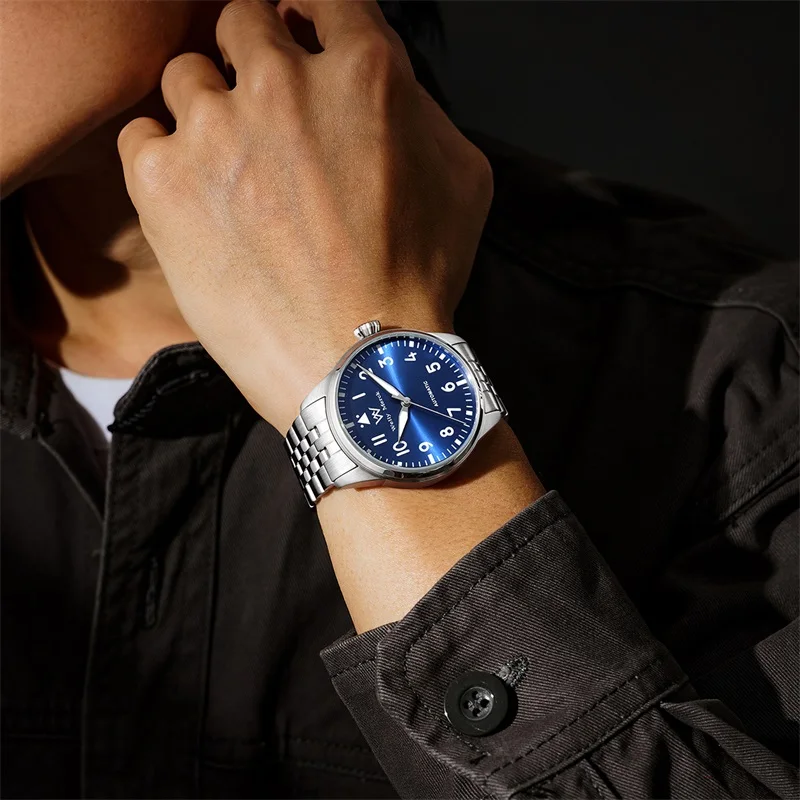
Essential Functionality: Features Born of Military Necessity
Beyond telling time reliably, military operations required additional watch functionality that civilian timepieces rarely offered. These purpose-driven features, born of battlefield requirements, fundamentally changed watch design and created the distinct character of field watches.
The “hacking seconds” feature—the ability to stop the seconds hand by pulling out the crown—became crucial for military operations requiring precise synchronization. Before a mission, officers could synchronize their watches to the exact second, ensuring coordinated timing for attacks, rendezvous points, or artillery support. This feature, now common in quality watches, originated from military necessity.
Crown design evolved significantly to meet battlefield demands. Oversized crowns became standard, allowing soldiers to operate their watches while wearing gloves in cold weather or combat conditions. These distinctive crowns were often protected by crown guards—small extensions of the case that prevented accidental damage or adjustment.
Anti-magnetic properties proved essential as electronic military equipment became more prevalent. Watches deployed near radar equipment, radio transmitters, or vehicle engines needed protection from magnetic fields that could drastically affect timekeeping accuracy. Special alloys for balance springs and magnetic shielding inside cases addressed this challenge.
Tactical considerations even influenced the external finish of military timepieces. Reflective surfaces could reveal a soldier’s position to enemy forces, so military-inspired automatic watches featured matte finishes on cases and crystals. Black cases and subdued colors became common for the same reason, creating the distinctive utilitarian aesthetic now associated with field watches.
Perhaps most importantly, movements were selected for reliability and serviceability under field conditions. Simple, robust calibers with fewer complications meant fewer potential failure points. Watches needed to function accurately for extended periods with minimal maintenance, and when service was required, they needed to be repairable with basic tools by military technicians rather than specialized watchmakers.
These functional elements, born from practical military needs, continue to define field watches today—proving that genuine utility creates lasting design value.
World War II: The Crucible That Defined Field Watch Standards
World War II represented the largest military mobilization in history, creating unprecedented demand for reliable timepieces across all branches of service. This massive scale drove standardization and refinement of field watch design, establishing archetypes that would influence watchmaking for decades to come.
The American A-11 specification became one of the most influential military watch standards ever created. Manufactured by companies including Elgin, Waltham, and Bulova, these watches featured black dials with white numerals, central seconds hands, and the all-important hacking feature. The A-11 established the archetypal field watch design: legible, durable, and functional without unnecessary embellishment.
In Britain, the War Department commissioned watches from twelve Swiss manufacturers, creating what collectors now call the “Dirty Dozen.” These W.W.W. (Watch, Wristlet, Waterproof) timepieces featured similar design elements to their American counterparts but with unique British military markings. Their continued collectibility demonstrates the enduring appeal of these purpose-built designs.
German forces relied on the distinctive Beobachtungsuhren (observation watches) or B-Uhren, featuring oversized cases and extremely legible dials designed primarily for aviation. These watches influenced the design of modern pilot watches and demonstrated how specialized military roles created distinctive variations on the field watch concept.
The complete history of field watches in military service shows how wartime manufacturing requirements drove simplification and standardization. Materials shortages forced intelligent design compromises that often improved functionality—proving that constraints can inspire innovation. The need to produce millions of watches quickly led to streamlined manufacturing processes and standardized parts.
Perhaps most importantly, WWII created a feedback loop between frontline troops and watch manufacturers. Reports from soldiers about performance failures led to real-time improvements in design and construction. Features that worked remained; those that didn’t were quickly modified or abandoned.
By war’s end, the fundamental template for military field watches was firmly established—not by marketing departments or fashion trends, but by the unforgiving test of combat conditions.
The MIL-SPEC Era: When Field Watches Became Precisely Defined
Following World War II, military procurement became increasingly sophisticated, with detailed specifications replacing the more general guidelines of earlier conflicts. The result was the MIL-SPEC era, when field watches achieved their most refined and standardized forms.
American military specifications like MIL-W-3818 and later MIL-PRF-46374 defined exact requirements for military timepieces in extraordinary detail. These documents specified everything from case materials and dimensions to accuracy requirements and testing procedures. Watches were subjected to extreme tests including temperature cycling, water immersion, shock resistance, and magnetic field exposure—often at levels far beyond what civilian watches would ever encounter.
These military specifications created a classification system for watches based on their intended use. Different specifications existed for general field use, diving operations, aviation, and specialized units. Each specification reflected the particular challenges of different military environments and missions, resulting in specialized designs optimized for specific conditions.
The NATO Stock Number (NSN) system formalized the procurement process, allowing consistent ordering of identical timepieces across allied forces. This standardization ensured that watches could be easily repaired, with interchangeable parts available throughout the supply chain—an important consideration for equipment deployed globally.
The military watch features engineered for extremes during this period included improved shock protection systems, enhanced water and pressure resistance, and increasingly sophisticated anti-magnetic shielding. Testing procedures became more rigorous, with watches subjected to repeated impacts, temperature extremes, and extended underwater exposure.
Perhaps most significantly, these detailed military specifications influenced civilian watch manufacturing far beyond actual government contracts. Watch companies began applying military testing standards to their consumer products, marketing this enhanced durability to civilians. Design elements originally created for military purposes—like NATO-style straps, 24-hour markings, and protective case designs—found their way into mainstream watches.
The MIL-SPEC era cemented the field watch as a distinct category with clearly defined characteristics, creating a template that continues to influence watch design today.
Beyond the Battlefield: How Military Features Transitioned to Civilian Appeal
As conflicts ended and veterans returned home, they brought with them an appreciation for the reliable timepieces that had served them in battle. The transition of field watches from military equipment to civilian staples began, driven by both practical benefits and deeper cultural connections.
The same features that made watches effective in combat proved equally valuable for civilian adventurers, explorers, and outdoorsmen. Mountain climbers appreciated the legibility and durability that had served infantrymen. Explorers benefited from the water resistance and shock protection developed for amphibious operations. The field watch found a natural audience among those who challenged themselves in demanding environments—people who needed tools rather than mere accessories.
Beyond practical considerations, field watches carried symbolic significance. They represented reliability, precision, and functionality in an increasingly disposable consumer culture. The honesty of their design—free from unnecessary ornamentation or artificial styling—appealed to those who valued authenticity and purpose. A field watch made a subtle statement about the wearer’s values: durability over fashion, function over status.
The aesthetic influence of military watches extended far beyond actual military-issue pieces. Manufacturers recognized the appeal of this purposeful design language and created classic field watches for civilian markets that captured the essence of military timepieces while adding refinements for everyday wear. Features originally developed for combat—like screw-down crowns, shock protection, and high-contrast dials—became standard in quality sports watches across all price points.
This civilian adoption wasn’t merely aesthetic appropriation but a recognition that genuine functionality creates enduring value. The principles that made watches effective on the battlefield—legibility, durability, and functionality—proved equally relevant in civilian life, explaining why military-inspired design continues to influence watchmaking decades after the specific military requirements have evolved.
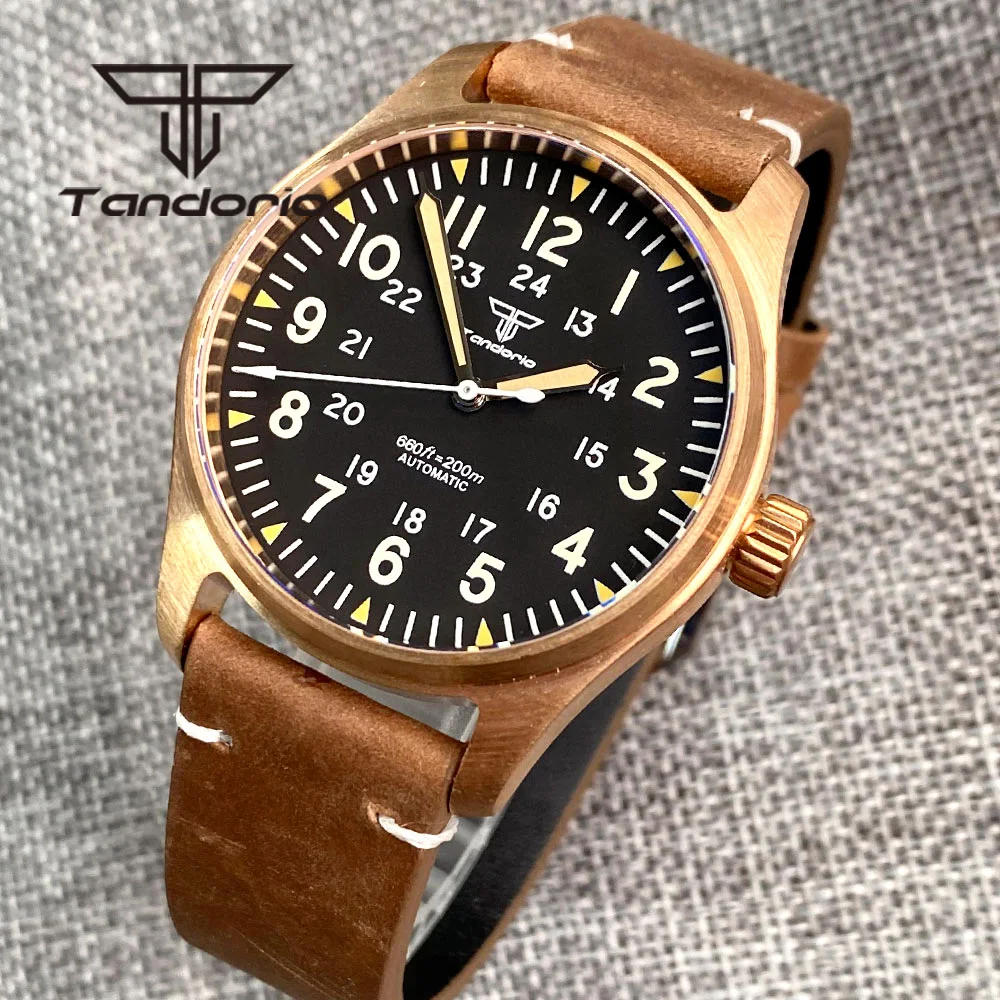
The Field Watch Today: Military Heritage with Modern Capabilities
Contemporary field watches represent a fascinating blend of historical military design principles and cutting-edge materials and engineering. While remaining true to their utilitarian origins, today’s field watches incorporate advances that their military ancestors could only dream of.
Modern case materials offer unprecedented durability. While stainless steel remains the standard for its excellent balance of properties, some manufacturers now employ hardened steel treatments that significantly increase scratch resistance. Ceramic components provide near-immunity to scratching, while carbon composites offer exceptional strength with minimal weight. These advances preserve the military principle of durability while pushing its boundaries beyond what was previously possible.
Crystal technology has similarly advanced. Synthetic sapphire—nearly as hard as diamond—has become the standard for quality field watches, offering scratch resistance far superior to the acrylic and mineral glass of vintage military pieces. Anti-reflective coatings improve legibility while maintaining the tactical advantage of reduced reflectivity.
Luminous technology has progressed dramatically from the radioactive materials of early military watches. Modern luminous compounds provide exceptional brightness with extended glow times without any radiation hazards. Some tactical automatic watches now incorporate tritium gas tubes that provide constant illumination for decades without requiring external light charging.
Movement technology offers options beyond the mechanical calibers of historical military watches. High-accuracy quartz movements provide reliability and precision that exceed vintage mechanical standards, while modern automatic movements offer improved shock resistance and power reserves. Many manufacturers skillfully blend these new capabilities with traditional field watch aesthetics, creating pieces that honor their heritage while exceeding original performance specifications.
Water resistance engineering has advanced significantly, with modern gasket systems and case designs providing reliable protection at depths far beyond what original military specifications required. These improvements make today’s field watches even more versatile for both professional and recreational activities.
Despite these technological advances, what makes contemporary field watches remarkable is their continued adherence to the core principles established by military necessity. The best modern designs honor this heritage while leveraging new materials and techniques to create timepieces of exceptional performance and durability.
Military Inspired Automatic Watches, Rugged Automatic Watches, Tactical Automatic Watches
Price range: $852.14 through $994.60 Select options This product has multiple variants. The options may be chosen on the product pageBronze Automatic Watches, Military Inspired Automatic Watches, Professional Spec Dive Watches
Price range: $1,442.21 through $1,442.82 Select options This product has multiple variants. The options may be chosen on the product pageClassic Pilot Watches, Military Inspired Automatic Watches
$561.00 Select options This product has multiple variants. The options may be chosen on the product pageRugged Automatic Watches, Unique Automatic Watches
Price range: $228.96 through $231.10 Select options This product has multiple variants. The options may be chosen on the product pageClassic Field Watches, Military Inspired Automatic Watches
Price range: $280.87 through $338.51 Select options This product has multiple variants. The options may be chosen on the product pageAutomatic Skeleton Watches, Military Inspired Automatic Watches, Unique Automatic Watches
$191.88 Select options This product has multiple variants. The options may be chosen on the product page
Why Field Watches Endure: Timeless Design Born of Genuine Need
The enduring appeal of field watches stems from a fundamental truth: design driven by genuine necessity often creates timeless objects. Unlike fashion-driven products that chase trends and planned obsolescence, field watches were born from critical requirements where failure wasn’t an option.
This origin story explains why field watch design feels so honest and enduring. Every element serves a purpose; nothing exists purely for decoration or marketing appeal. The high-contrast dial, the sturdy case, the luminous hands—each feature addresses a specific functional need. This clarity of purpose creates an aesthetic integrity that transcends passing trends.
The field watch represents a counterpoint to our disposable consumer culture. In an era when many products are designed to be replaced rather than repaired, rugged automatic watches stand as examples of objects built to last for decades—or even generations. Their durability isn’t just physical but aesthetic as well. A well-designed field watch looks as appropriate today as it did seventy years ago, and likely will seventy years from now.
Perhaps most importantly, field watches connect wearers to a heritage of craftsmanship and purpose. Each time you check the time on a field watch, you’re experiencing the culmination of design solutions refined through decades of real-world testing in the most demanding conditions imaginable. There’s an authenticity to these timepieces that can’t be manufactured through marketing alone—it must be earned through function and history.
This combination of honest design, practical functionality, and historical significance explains why field watches continue to appeal across generations. They represent values that transcend fashion: reliability, clarity, durability, and purpose. In a world of planned obsolescence and artificial status markers, the field watch offers something refreshingly genuine—design that exists to serve rather than impress.
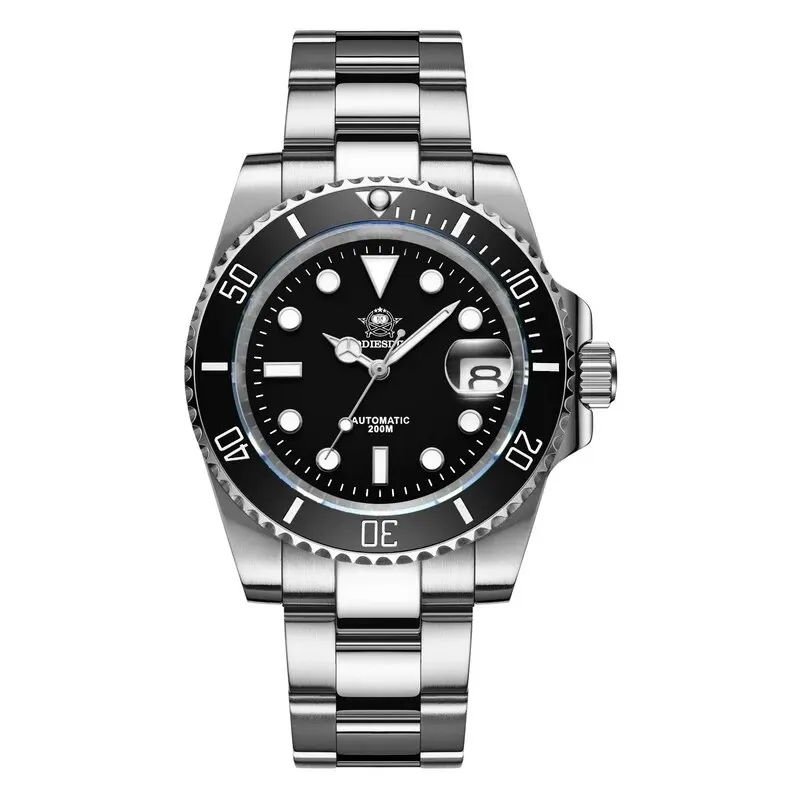
Field Watch Selection: What Features Matter Most?
When evaluating field watches, understanding which features provide genuine value can help you make a more informed choice. Here’s practical guidance on what truly matters in a field watch, based on the military heritage we’ve explored.
Is automatic or quartz better for a reliable field watch?
Both movement types offer distinct advantages. Automatic movements connect you to the traditional heritage of mechanical timekeeping and never require battery changes—ideal for extended deployments away from civilization. However, quality quartz movements provide superior accuracy and shock resistance while requiring minimal maintenance. Your choice should reflect your personal preferences and intended use.
How much water resistance is actually necessary for everyday use?
For genuine field use, 100 meters (330 feet) of water resistance provides a comfortable safety margin for rain, swimming, and accidental immersion. While higher ratings offer additional peace of mind, they’re generally only necessary for dedicated diving. Remember that water resistance depends on properly maintained gaskets and secure crowns.
Are traditional field watch sizes still practical today?
Vintage military watches typically measured 33-36mm—small by modern standards. Contemporary field watches often range from 38-42mm, balancing visibility with comfort. Your wrist size should guide your choice; the watch should be large enough to read easily but comfortable for all-day wear. The field watch’s functionality depends on comfort during extended use.
Does case material make a significant difference in durability?
While stainless steel remains the gold standard for its excellent balance of corrosion resistance, strength, and affordability, material choice does impact long-term durability. Titanium offers superior strength-to-weight ratio and corrosion resistance but scratches more easily. Bronze develops a unique patina but requires more maintenance. For most users, quality stainless steel provides the best combination of durability and value.
Understanding how field watch functionality in combat zones translates to civilian use helps you appreciate which features provide actual value rather than just marketing points. The best field watch isn’t necessarily the most expensive or feature-laden, but the one whose capabilities align most closely with your specific needs and usage patterns.

